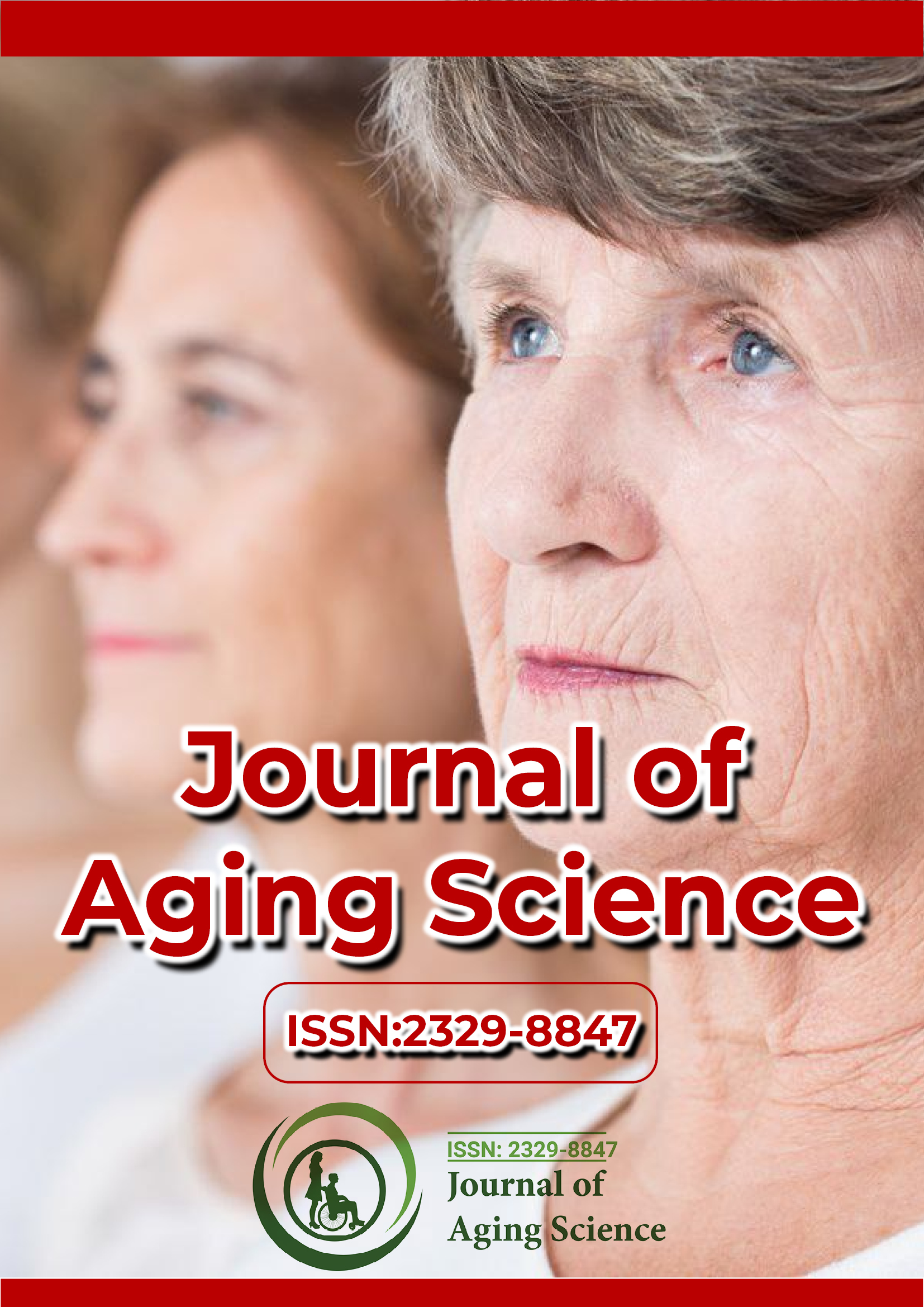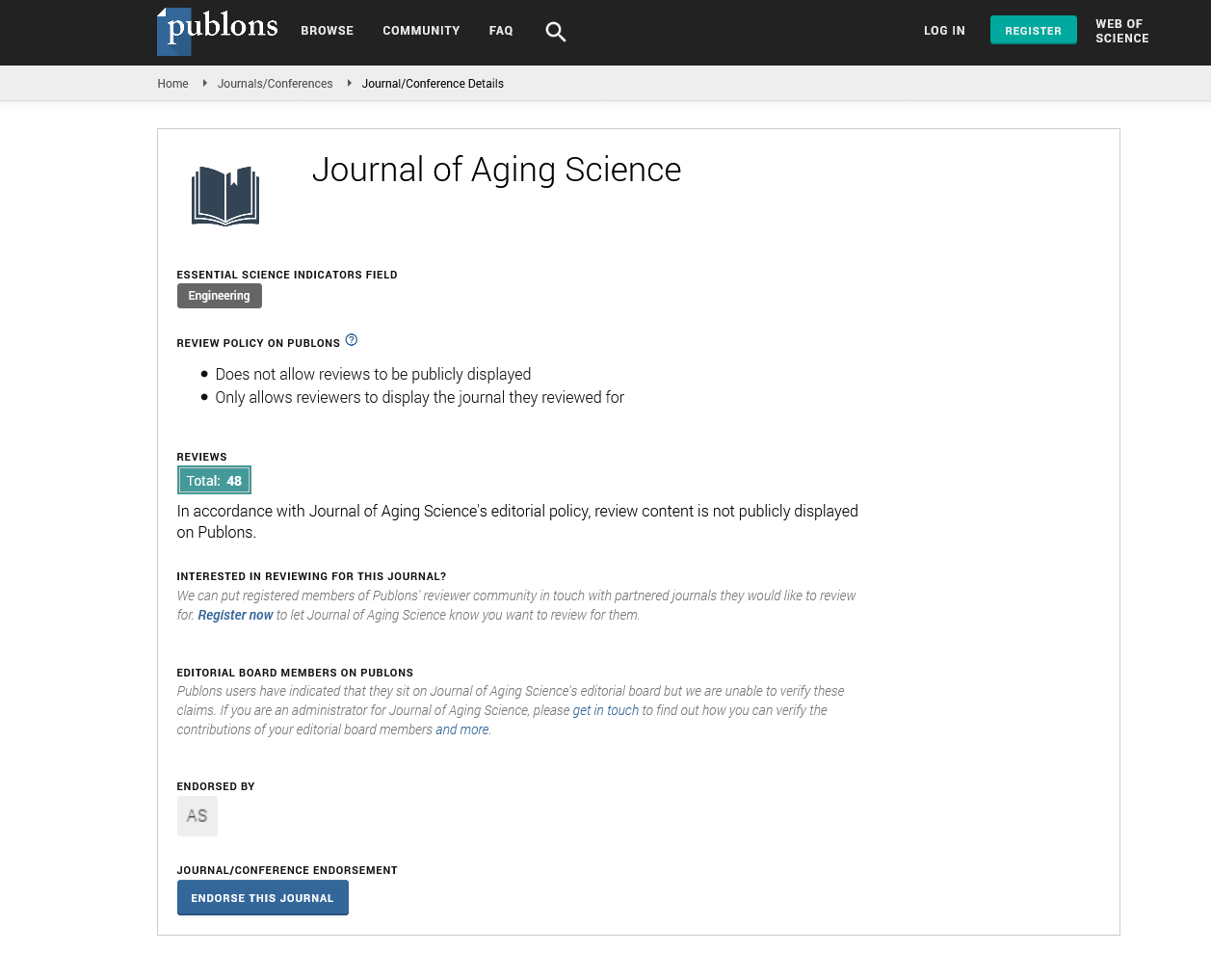Indexed In
- Open J Gate
- Academic Keys
- JournalTOCs
- ResearchBible
- RefSeek
- Hamdard University
- EBSCO A-Z
- OCLC- WorldCat
- Publons
- Geneva Foundation for Medical Education and Research
- Euro Pub
- Google Scholar
Useful Links
Share This Page
Journal Flyer

Open Access Journals
- Agri and Aquaculture
- Biochemistry
- Bioinformatics & Systems Biology
- Business & Management
- Chemistry
- Clinical Sciences
- Engineering
- Food & Nutrition
- General Science
- Genetics & Molecular Biology
- Immunology & Microbiology
- Medical Sciences
- Neuroscience & Psychology
- Nursing & Health Care
- Pharmaceutical Sciences
Commentary - (2025) Volume 13, Issue 1
Sarcopenia: Mechanisms and Therapeutic Strategies for Age-Related Muscle Loss
Cheng Wan*Received: 27-Mar-2025, Manuscript No. JASC-25-28489; Editor assigned: 01-Mar-2025, Pre QC No. JASC-25-28489 (PQ); Reviewed: 07-Mar-2025, QC No. JASC-25-28489; Revised: 14-Mar-2025, Manuscript No. JASC-25-28489 (R); Published: 28-Mar-2025, DOI: 10.35248/2329-8847.25.13.401
Description
Sarcopenia, the progressive loss of skeletal muscle mass, strength and function with age, is a major contributor to frailty, reduced mobility and increased risk of falls and chronic diseases in older adults. This condition is influenced by a complex exchange of biological, environmental and lifestyle factors. Understanding the underlying mechanisms and developing effective therapeutic strategies are necessary for mitigating the impact of sarcopenia and promoting healthy aging.
Mechanisms of sarcopenia
Sarcopenia arises from several interconnected biological processes that contribute to muscle deterioration:
Neuromuscular changes: Aging leads to the degeneration of motor neurons, resulting in the loss of motor units and impaired neuromuscular junction function. This contributes to decreased muscle fiber recruitment and muscle weakness.
Hormonal imbalance: Declines in anabolic hormones such as testosterone, growth hormone and Insulin-Like Growth Factor-1 (IGF-1) reduce muscle protein synthesis and contribute to muscle atrophy.
Chronic inflammation: Increased levels of pro-inflammatory cytokines, such as Interleukin-6 (IL-6) and Tumor Necrosis Factor-Alpha (TNF-α), promote muscle protein breakdown and inhibit muscle regeneration.
Mitochondrial dysfunction: Aging-associated mitochondrial impairment leads to reduced ATP production, increased oxidative stress and muscle fatigue, which increase muscle loss.
Protein metabolism dysregulation: An imbalance between muscle protein synthesis and degradation contributes to muscle wasting. The ubiquitin-proteasome system and autophagylysosomal pathways become hyperactive, accelerating protein breakdown.
Satellite cell dysfunction: Satellite cells are necessary for muscle repair and regeneration. With age, their regenerative capacity declines, reducing the ability of muscles to recover from injury and stress.
Therapeutic strategies for sarcopenia
Given the multifactorial nature of sarcopenia, a combination of interventions targeting muscle preservation and regeneration is necessary. The following therapeutic strategies have shown potential:
Exercise and physical activity: Resistance training and aerobic exercise are the most effective interventions for combating sarcopenia. They promote muscle hypertrophy, enhance neuromuscular function and improve metabolic health. Regular physical activity also helps reduce inflammation and maintain mitochondrial function.
Nutritional interventions: Protein supplementation: Adequate protein intake, particularly leucine-rich sources, stimulates muscle protein synthesis and helps counteract muscle loss.
Amino acid supplements: Necessary amino acids, including Branched-Chain Amino Acids (BCAAs), have been shown to enhance muscle anabolism.
Omega-3 fatty acids: These have anti-inflammatory properties and support muscle function by modulating protein metabolism.
Vitamin D: Deficiency in vitamin D is associated with muscle weakness. Supplementation improves muscle function and reduces fall risk in older adults.
Pharmacological approaches: Several pharmacological agents are under investigation for their potential to treat sarcopenia:
Selective Androgen Receptor Modulators (SARMs): These compounds represent the effects of testosterone, promoting muscle growth with fewer side effects.
Myostatin inhibitors: Myostatin negatively regulates muscle growth. Inhibitors such as follistatin-based therapies have shown potential in enhancing muscle mass.
Metformin and rapamycin: These drugs, which modulate cellular metabolism and inflammation, are being explored for their potential benefits in muscle preservation.
Lifestyle modifications: Maintaining an active lifestyle, reducing sedentary behavior, managing stress and ensuring adequate sleep contribute to overall muscle health and longevity.
Conclusion
Sarcopenia is a prevalent and debilitating condition that significantly impacts the quality of life in aging populations. A comprehensive approach incorporating exercise, nutrition, pharmacological interventions and lifestyle modifications is important for mitigating muscle loss and preserving functional independence. Future research into novel therapeutic strategies and personalized interventions holds promise for improving outcomes in individuals affected by sarcopenia.
Citation: Wan C (2025). Sarcopenia: Mechanisms and Therapeutic Strategies for Age-Related Muscle Loss. J Aging Sci. 13:401.
Copyright: © 2025 Wan C. This is an open-access article distributed under the terms of the Creative Commons Attribution License, which permits unrestricted use, distribution and reproduction in any medium, provided the original author and source are credited.

